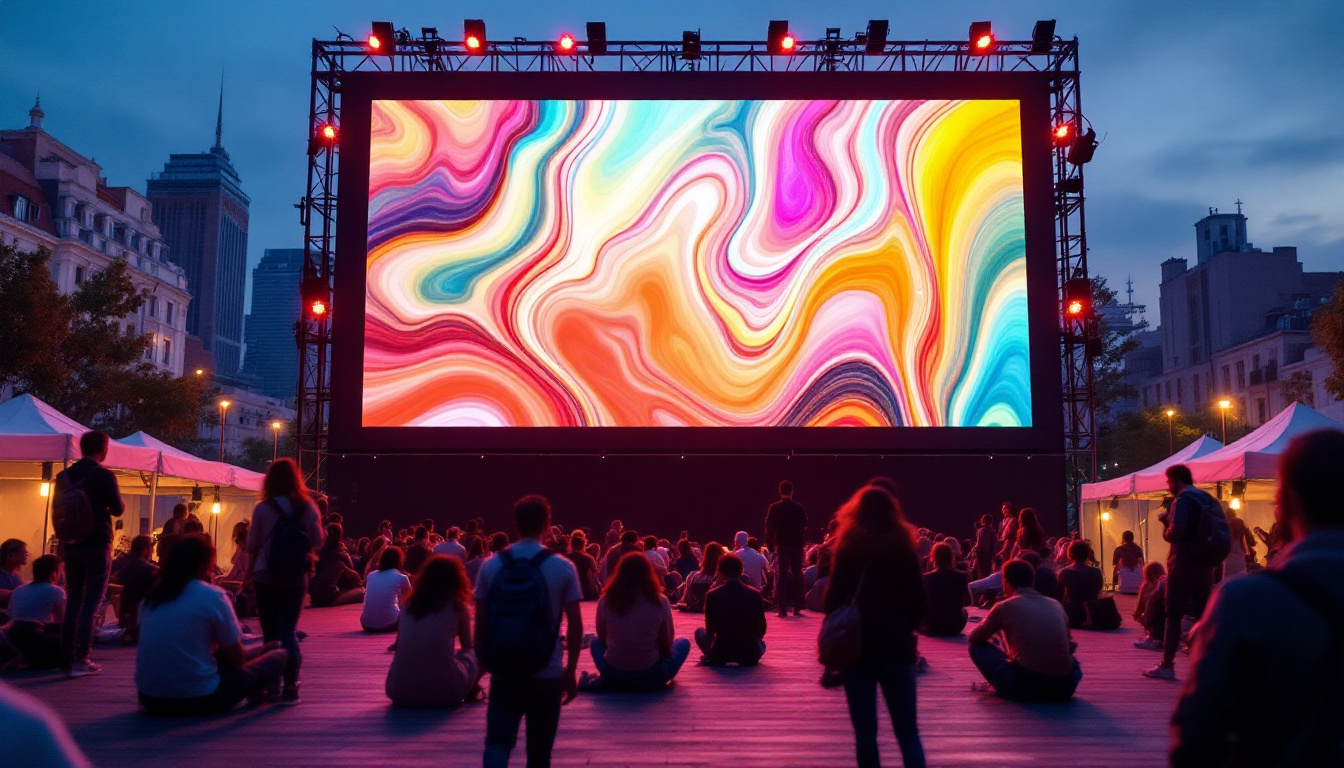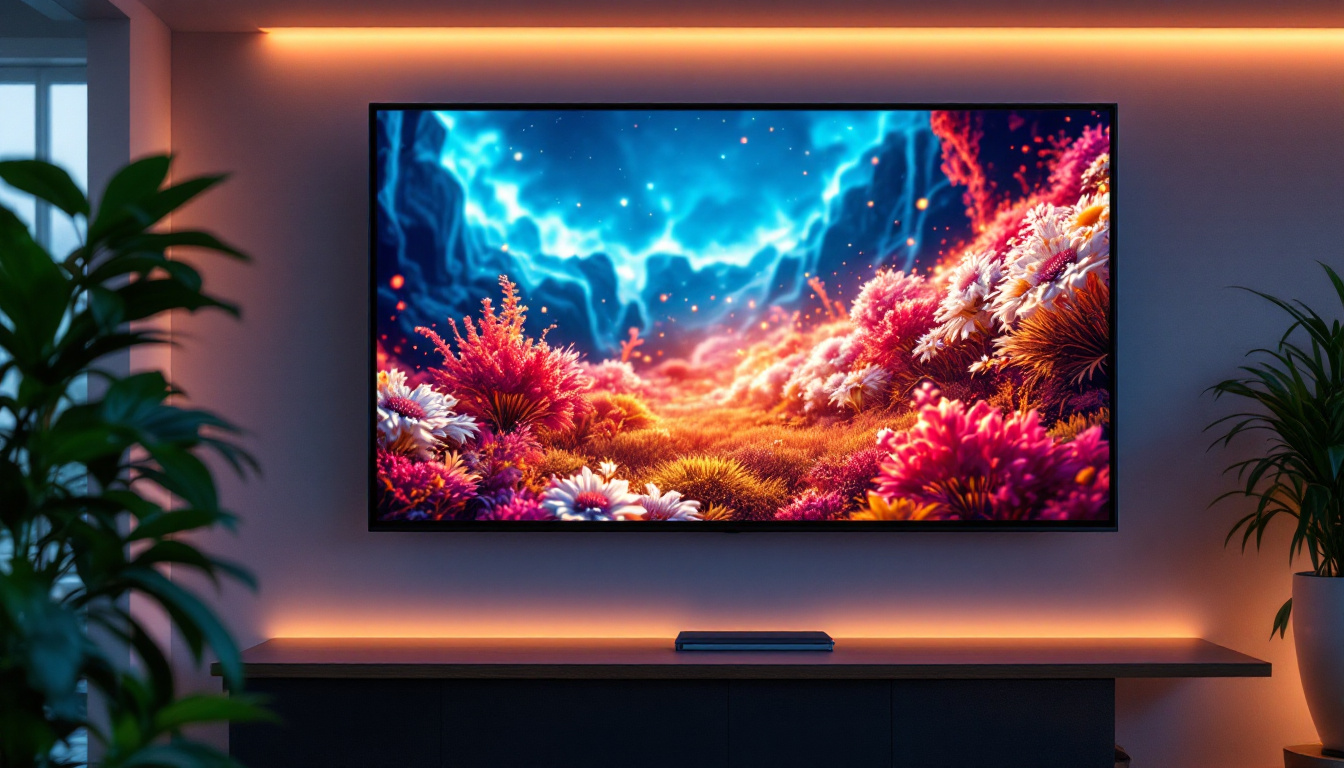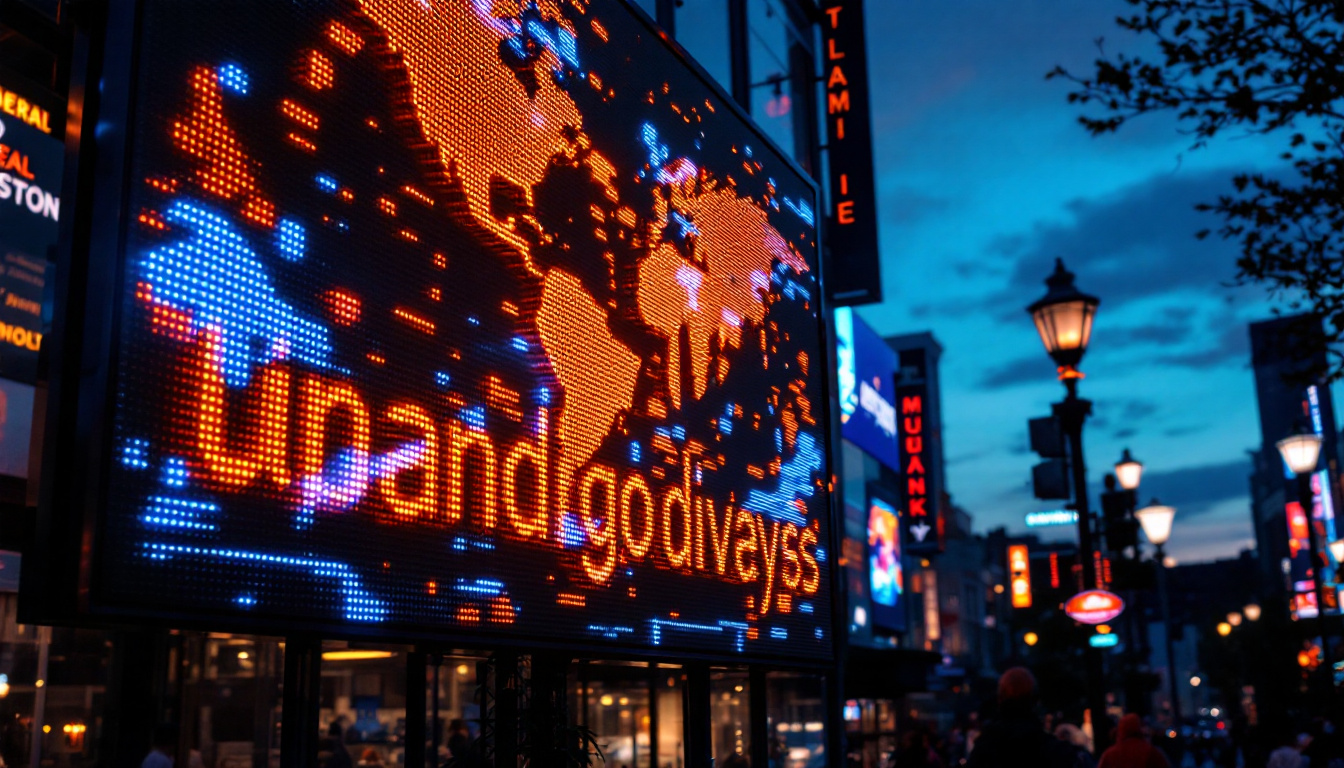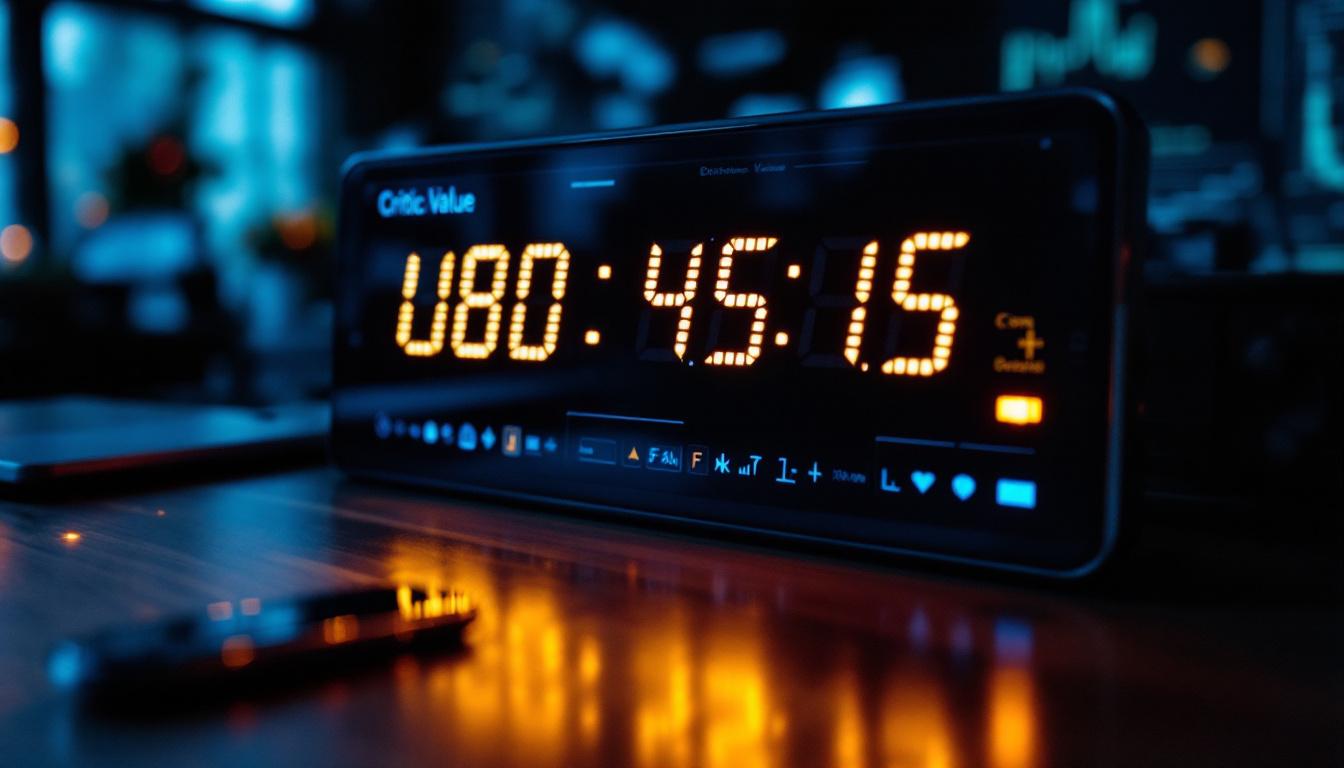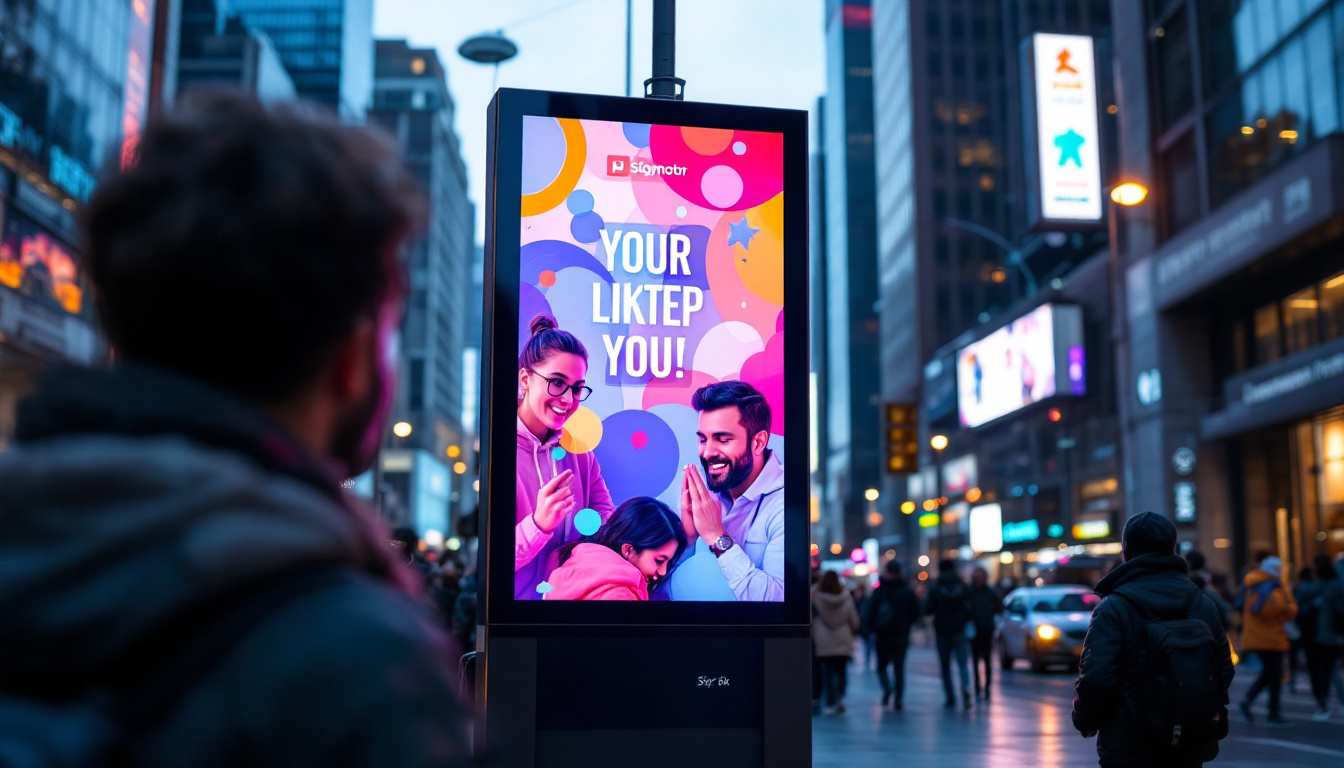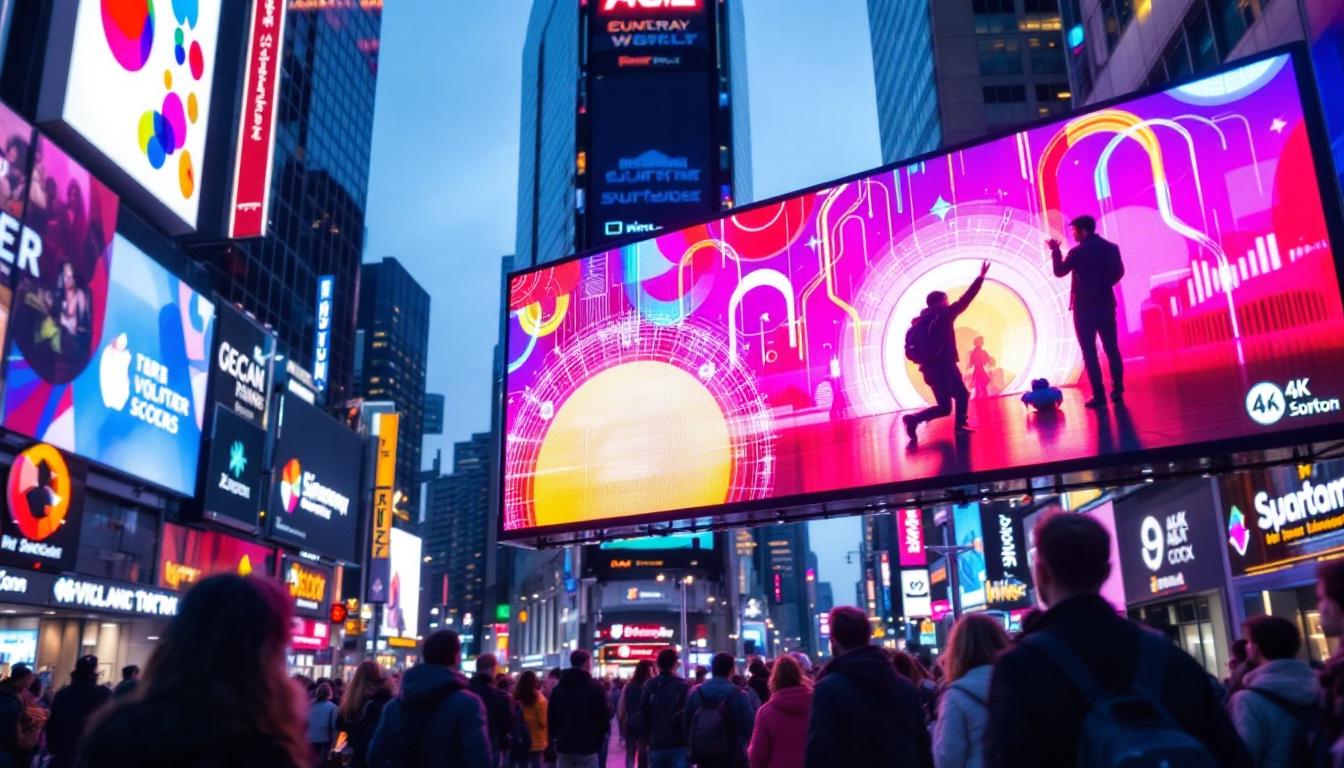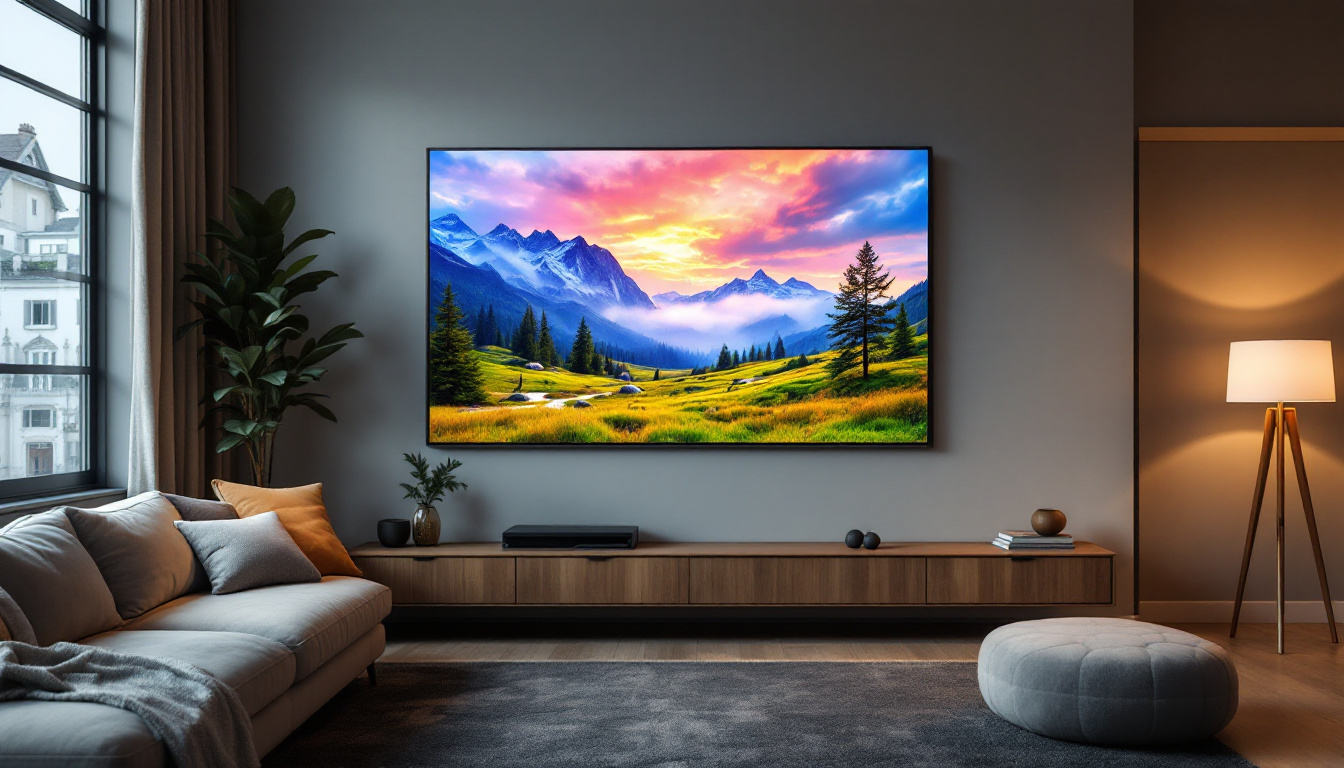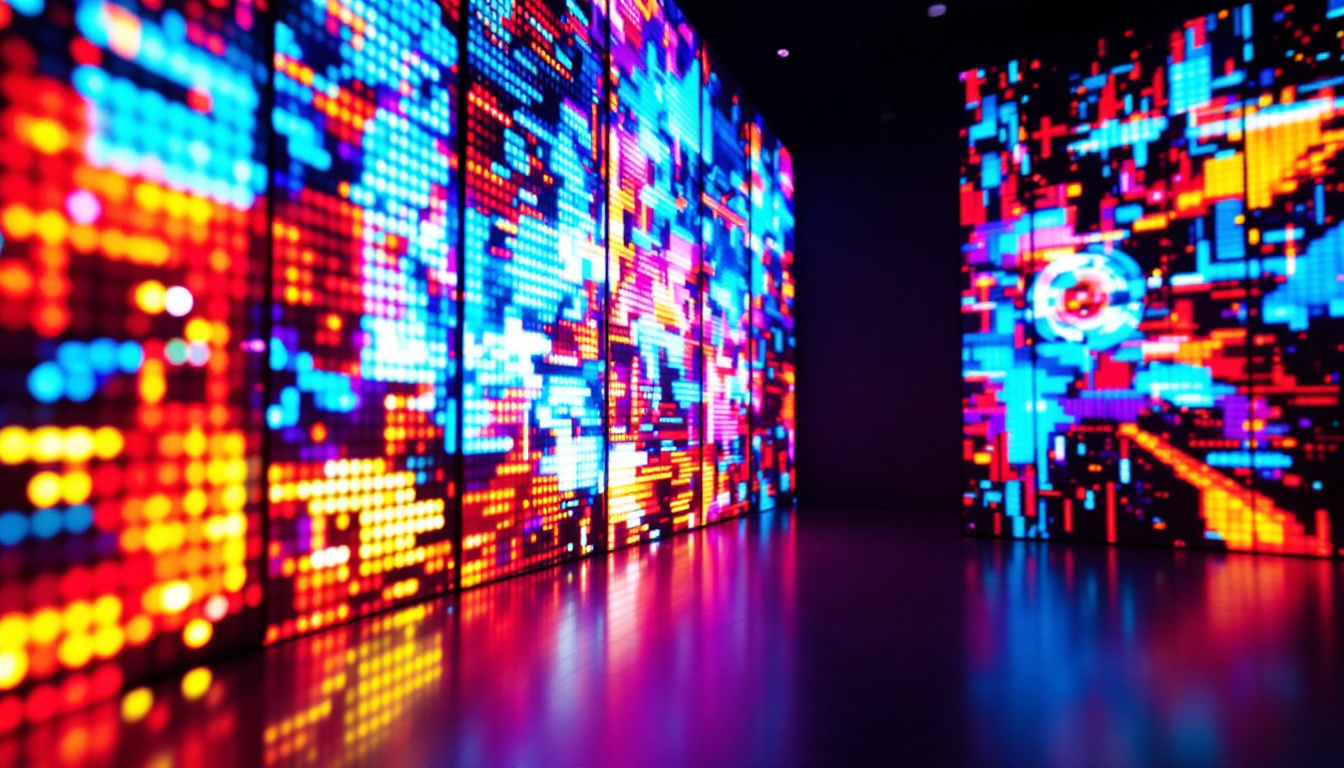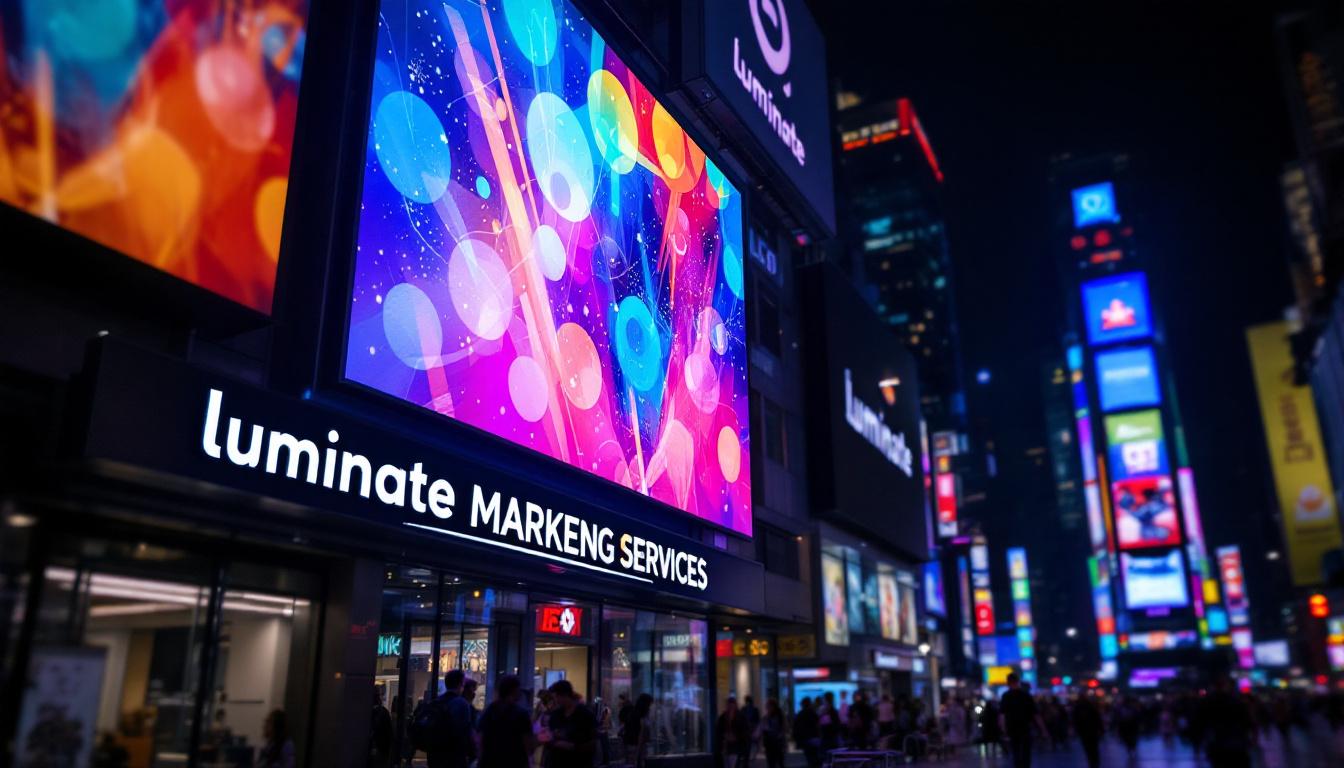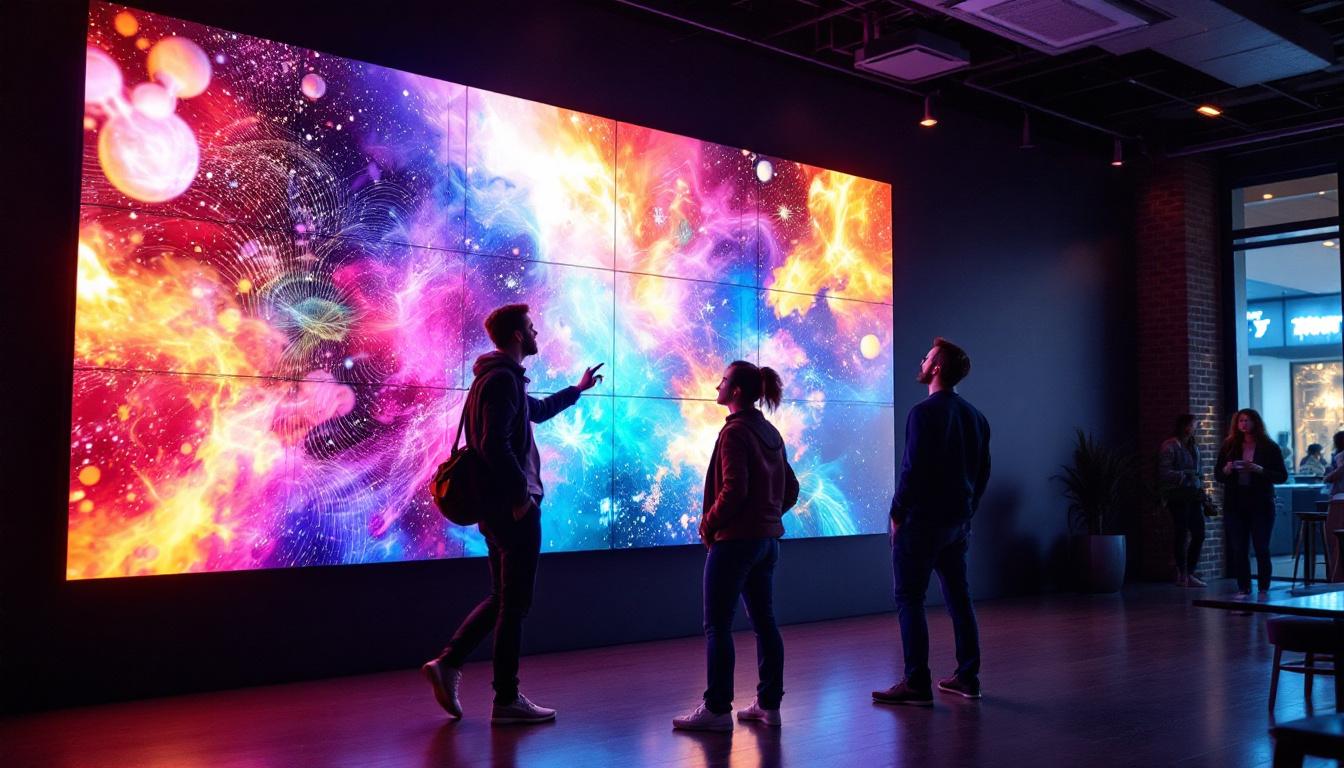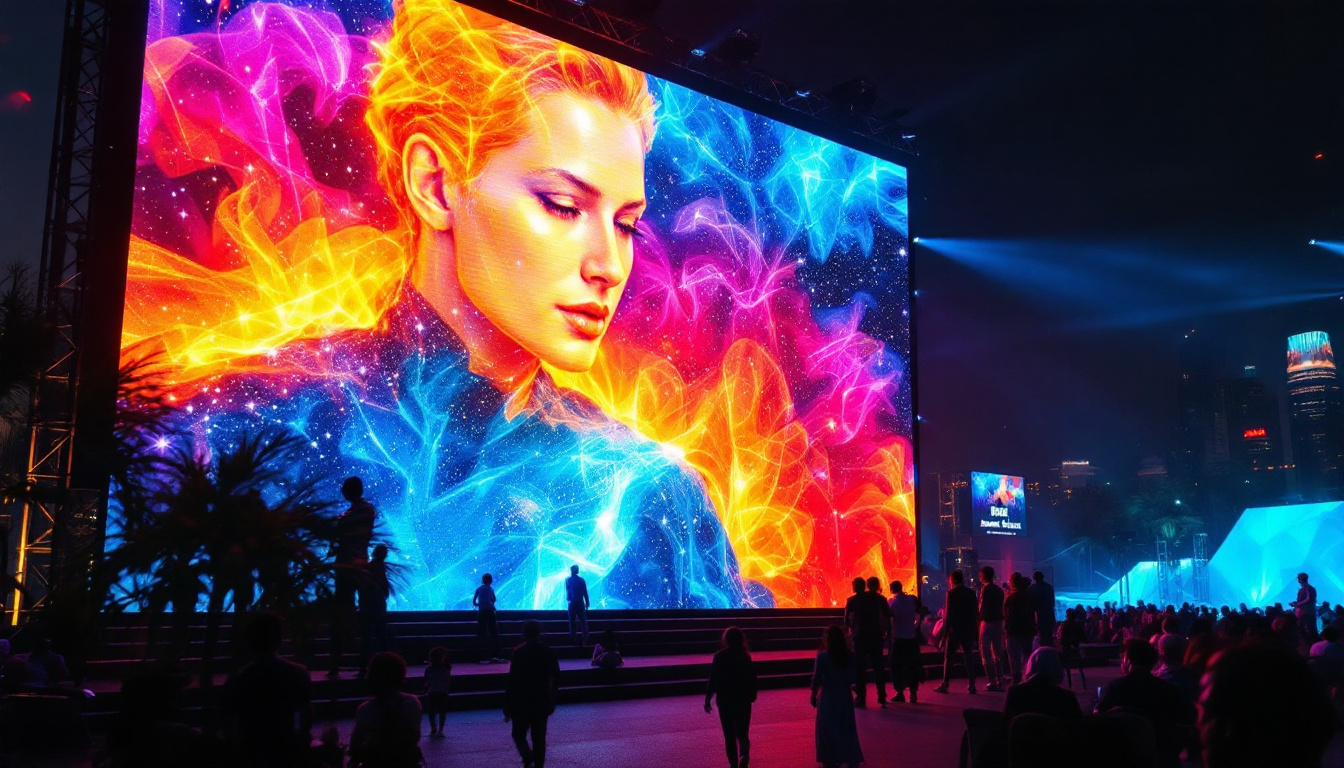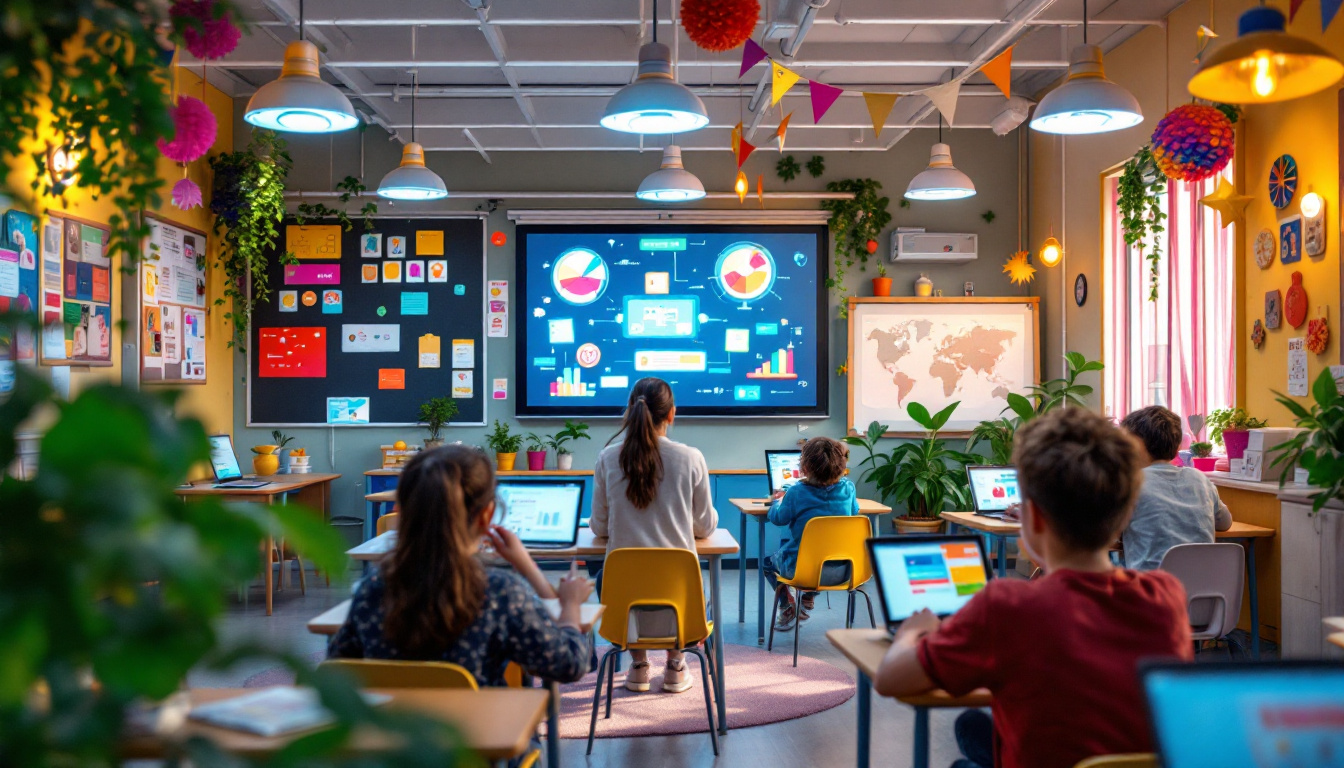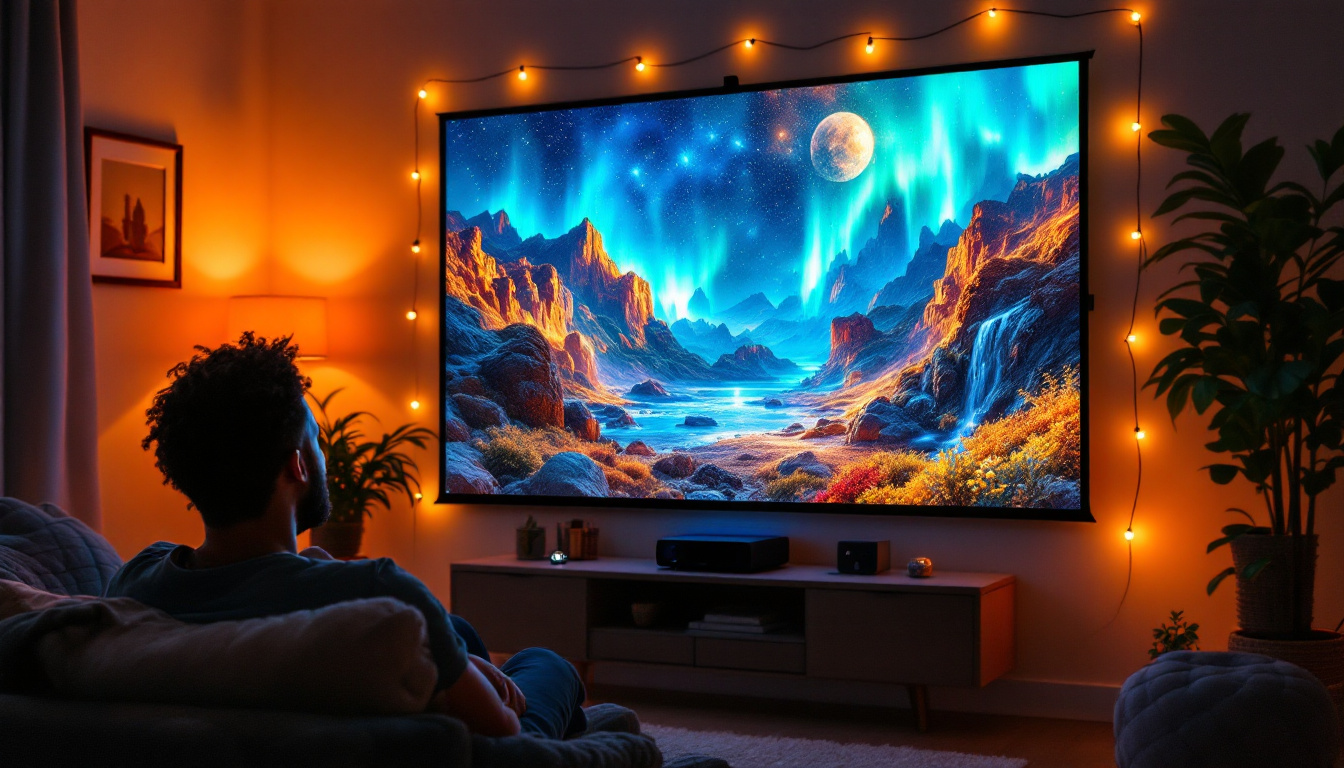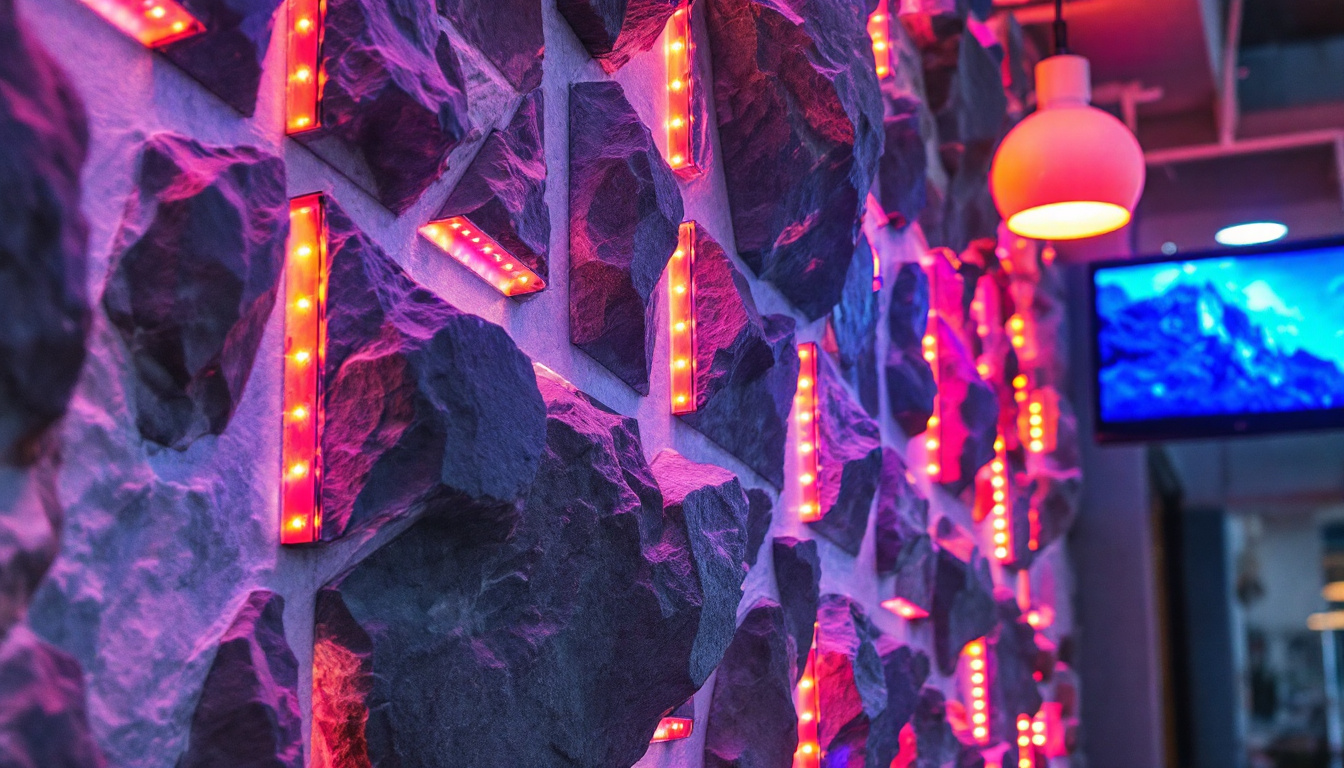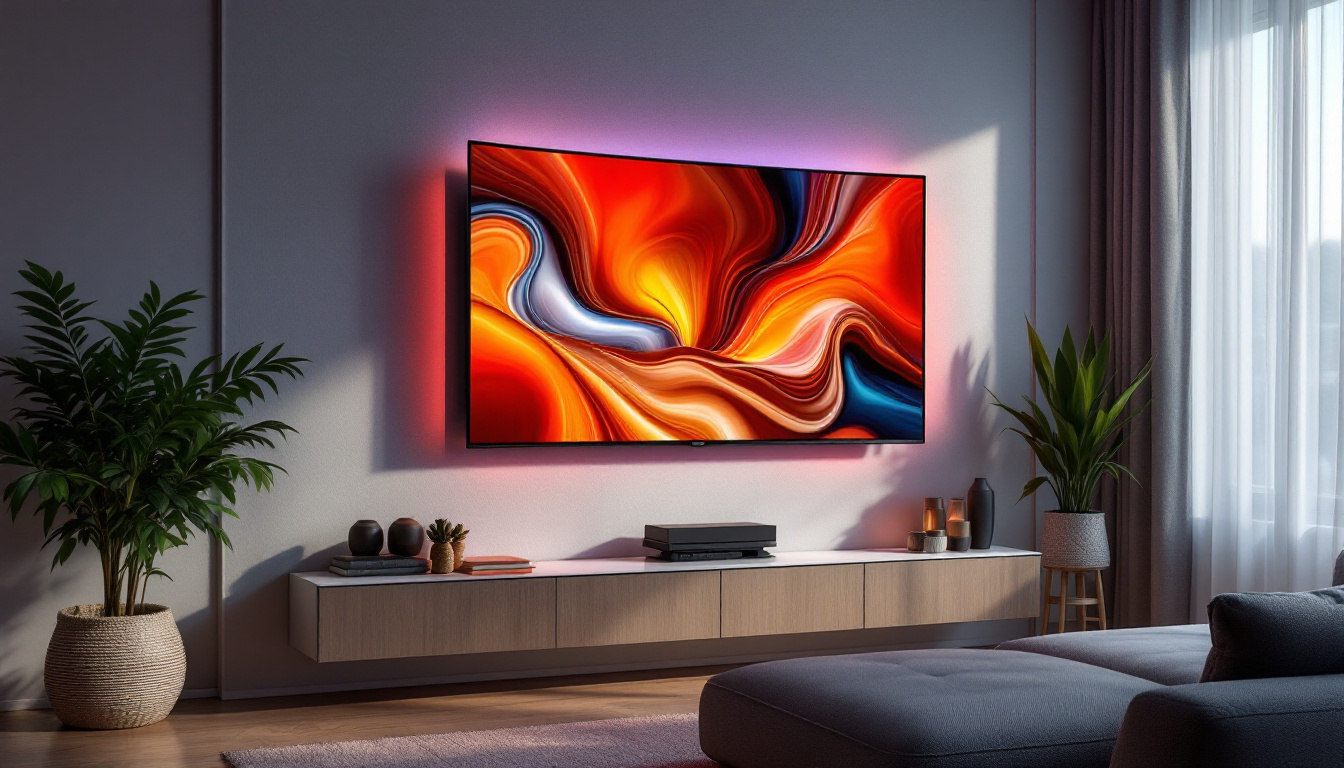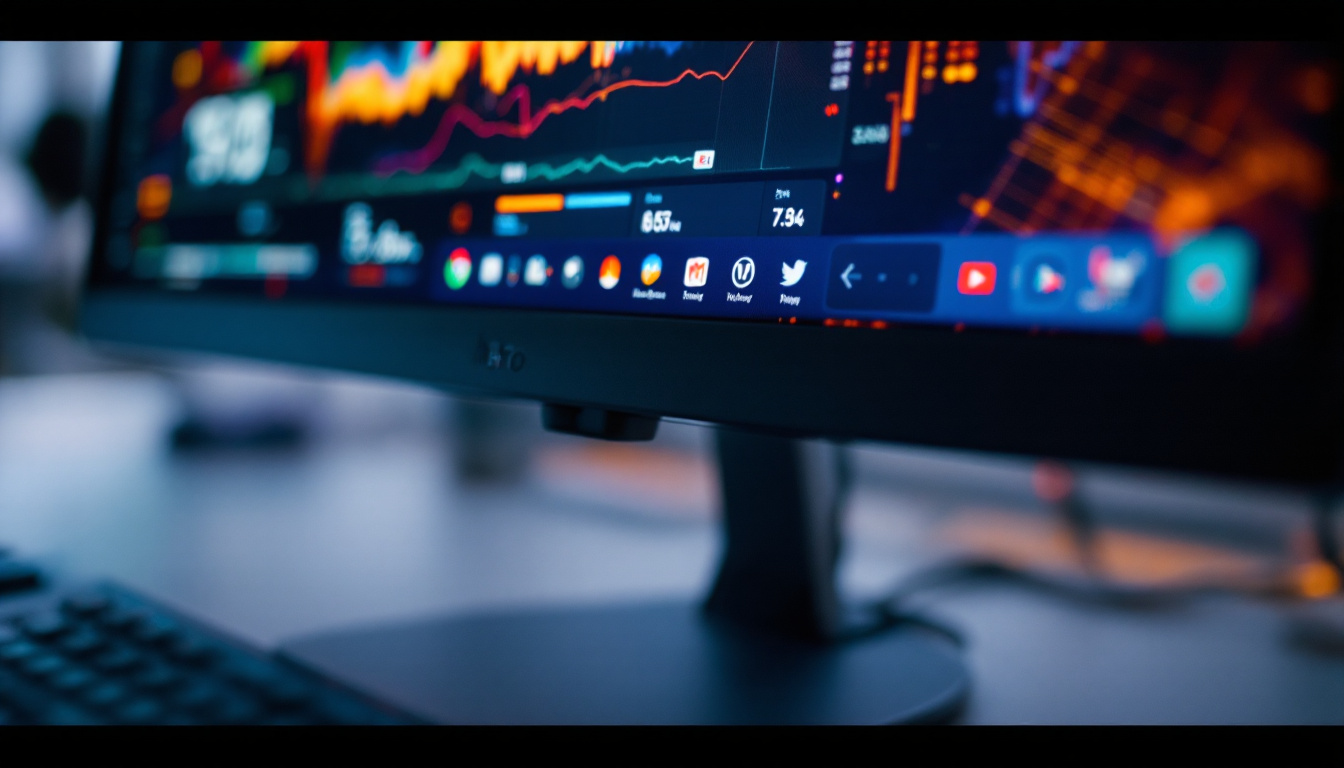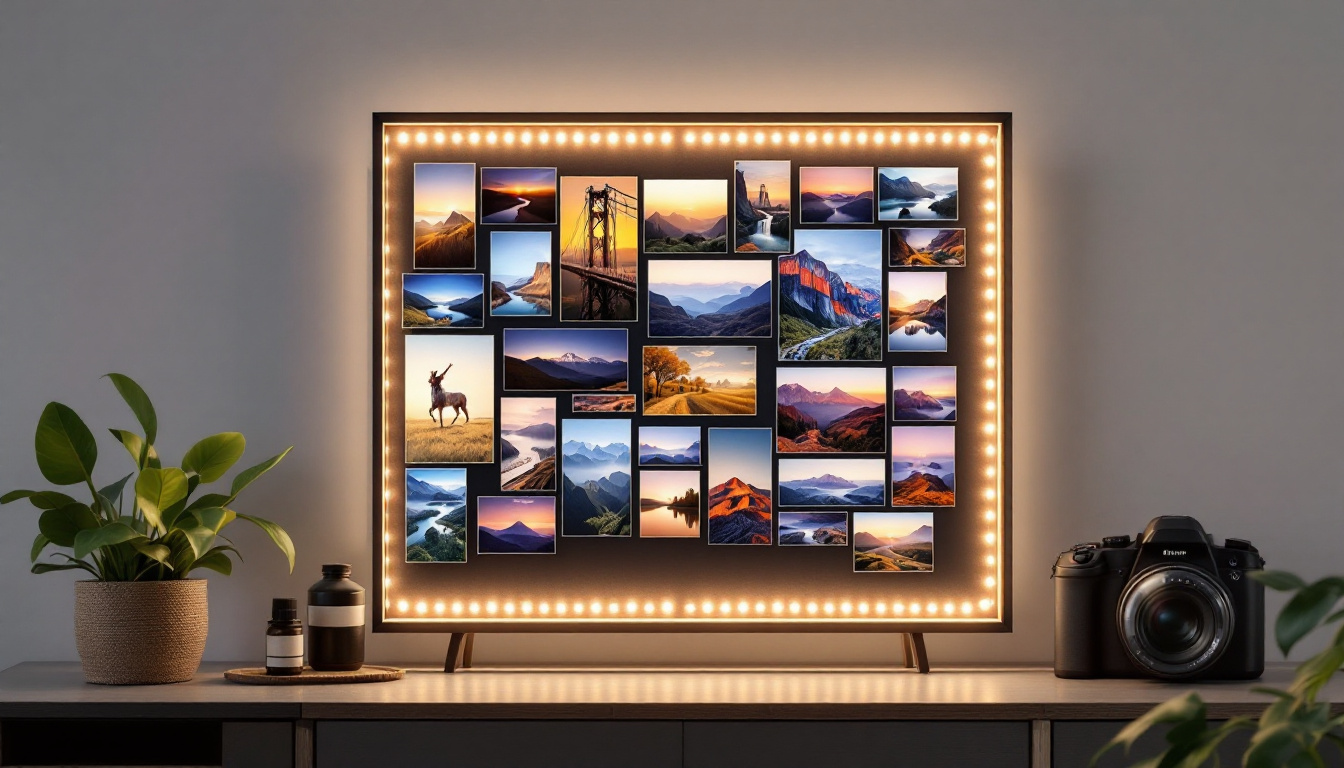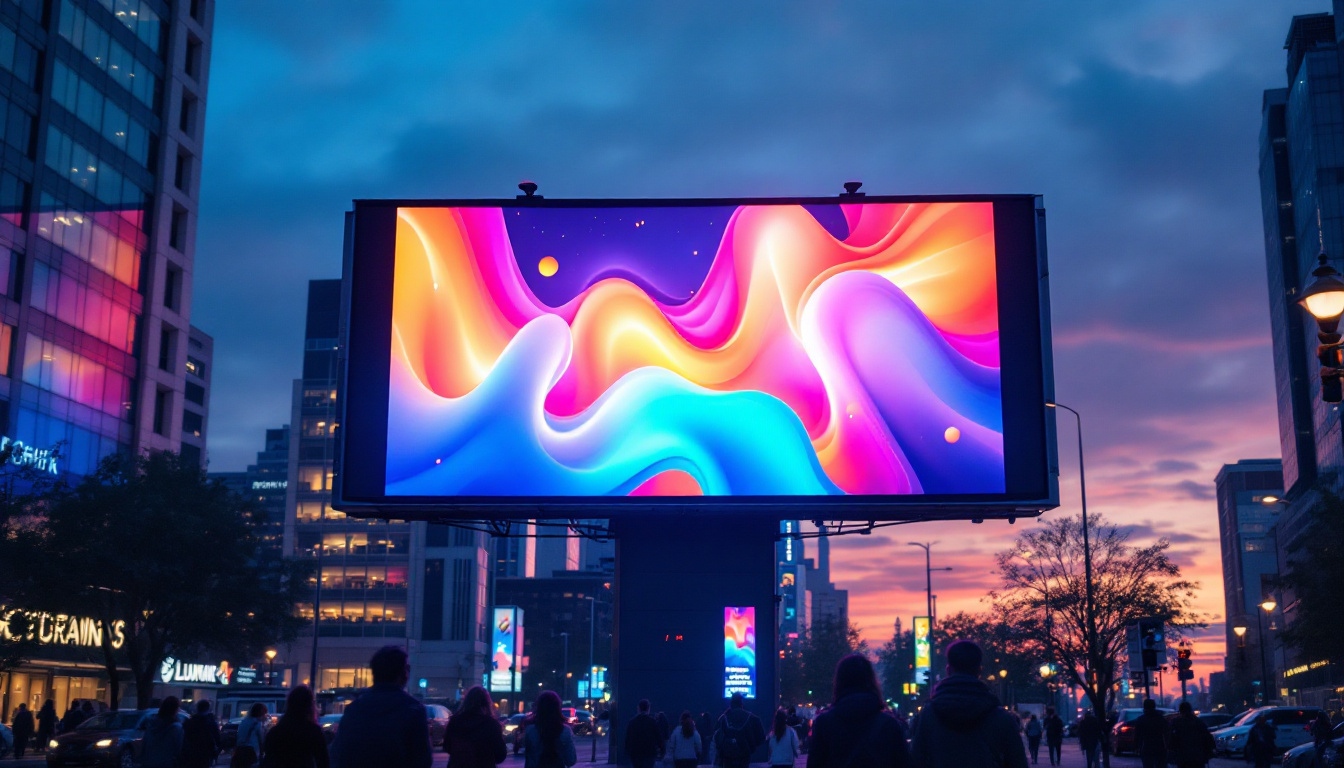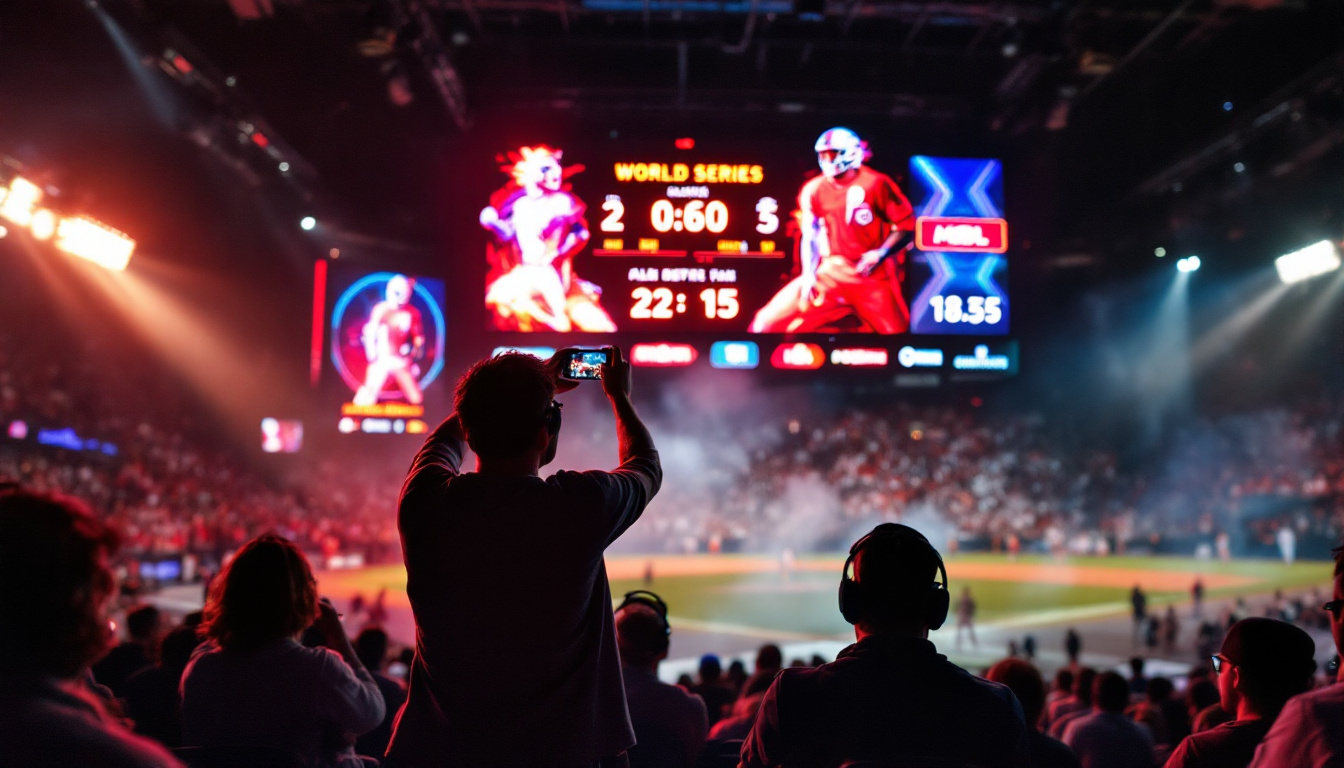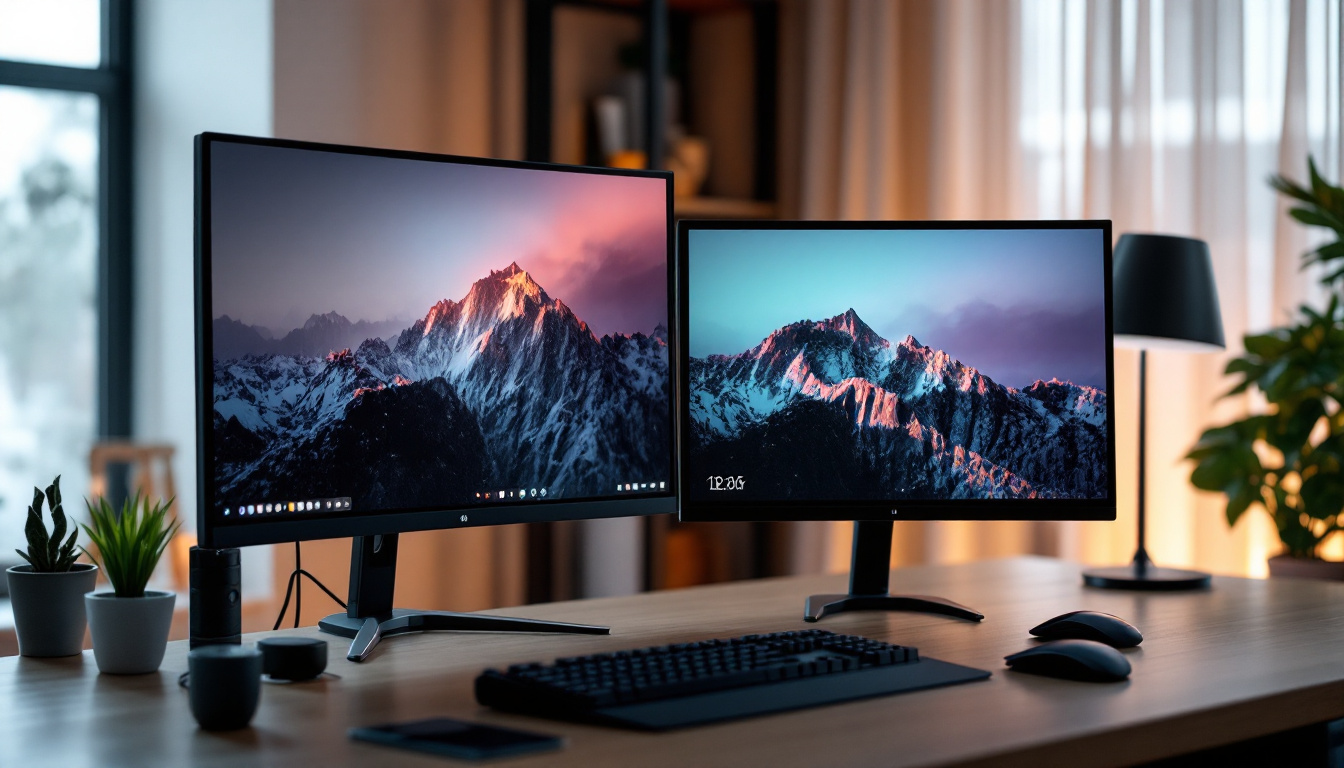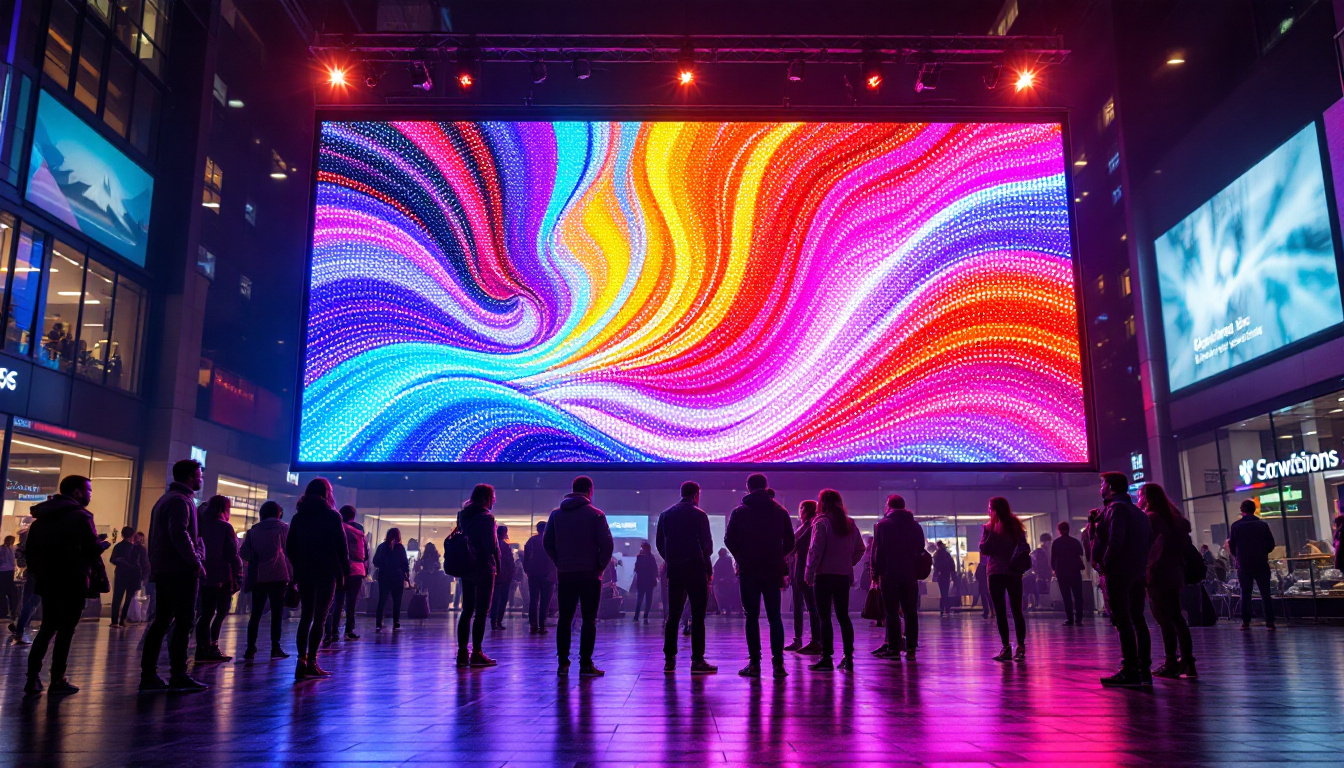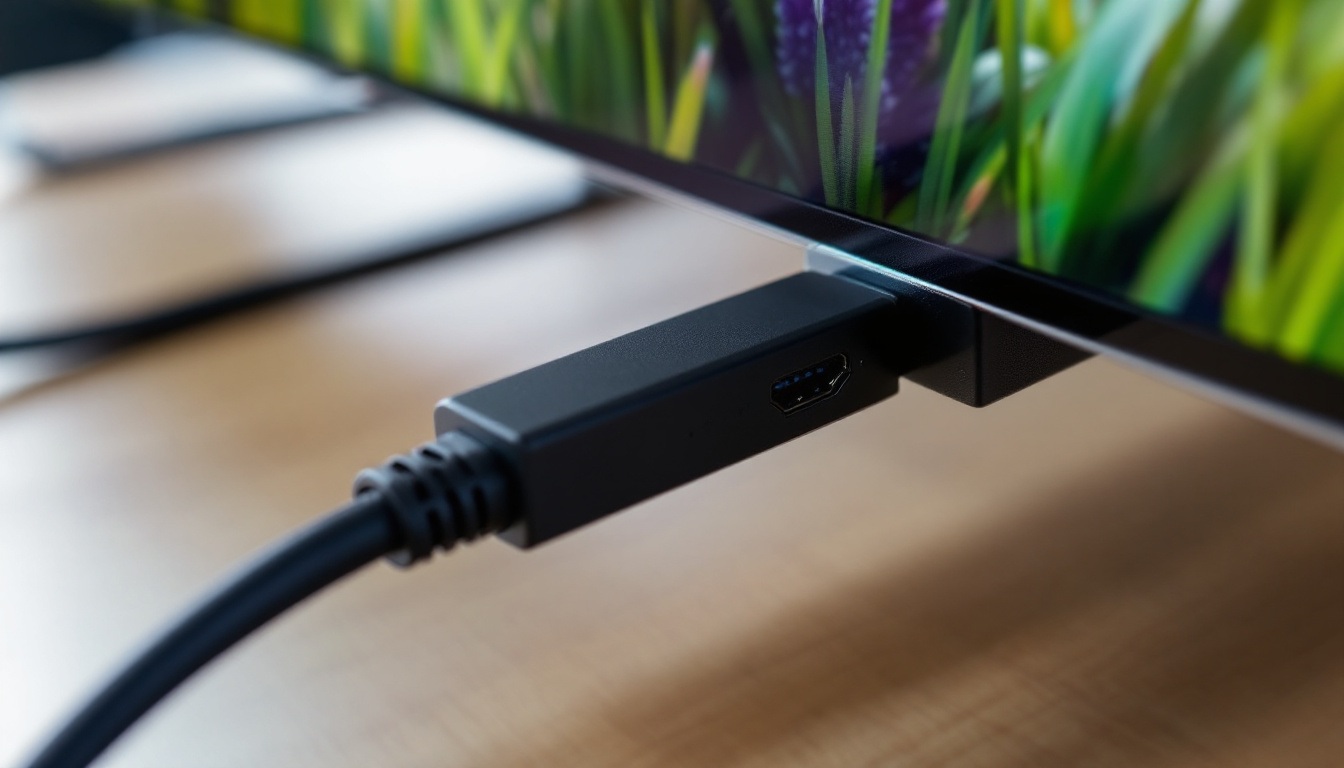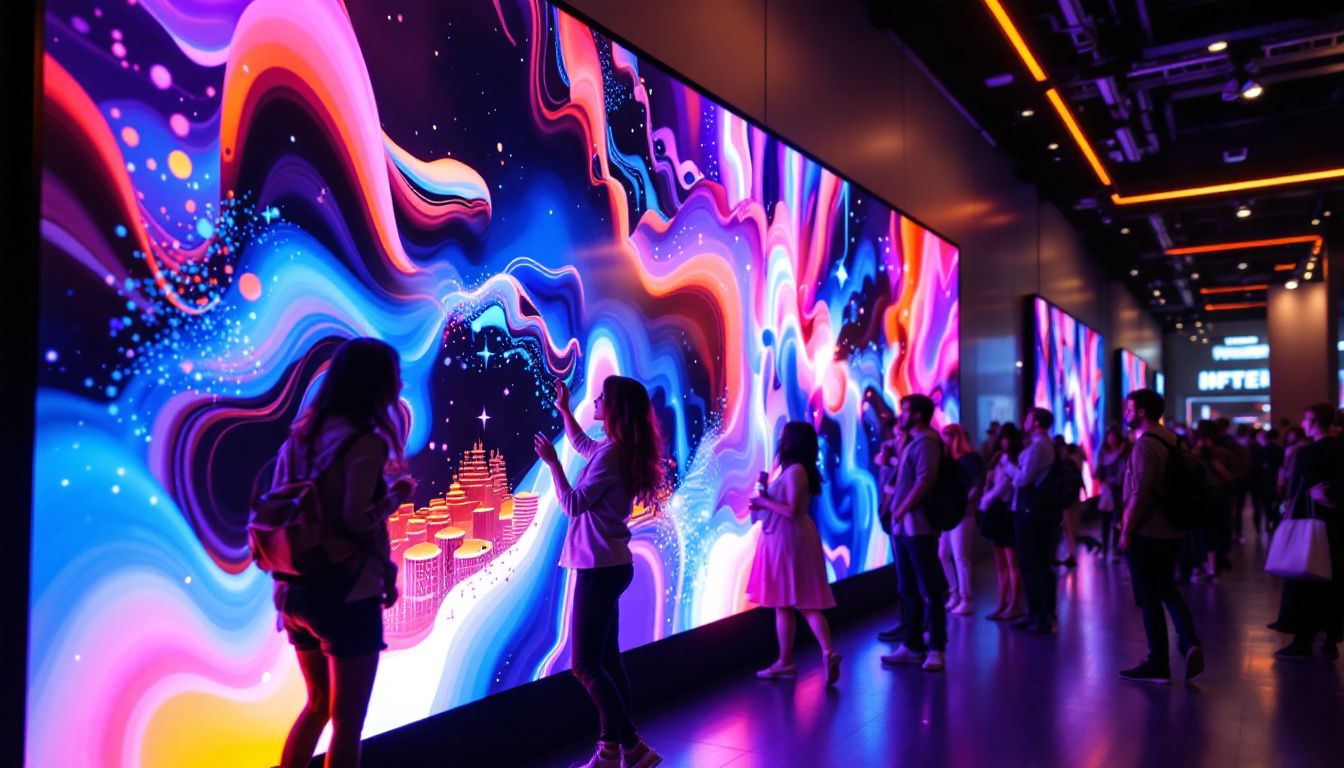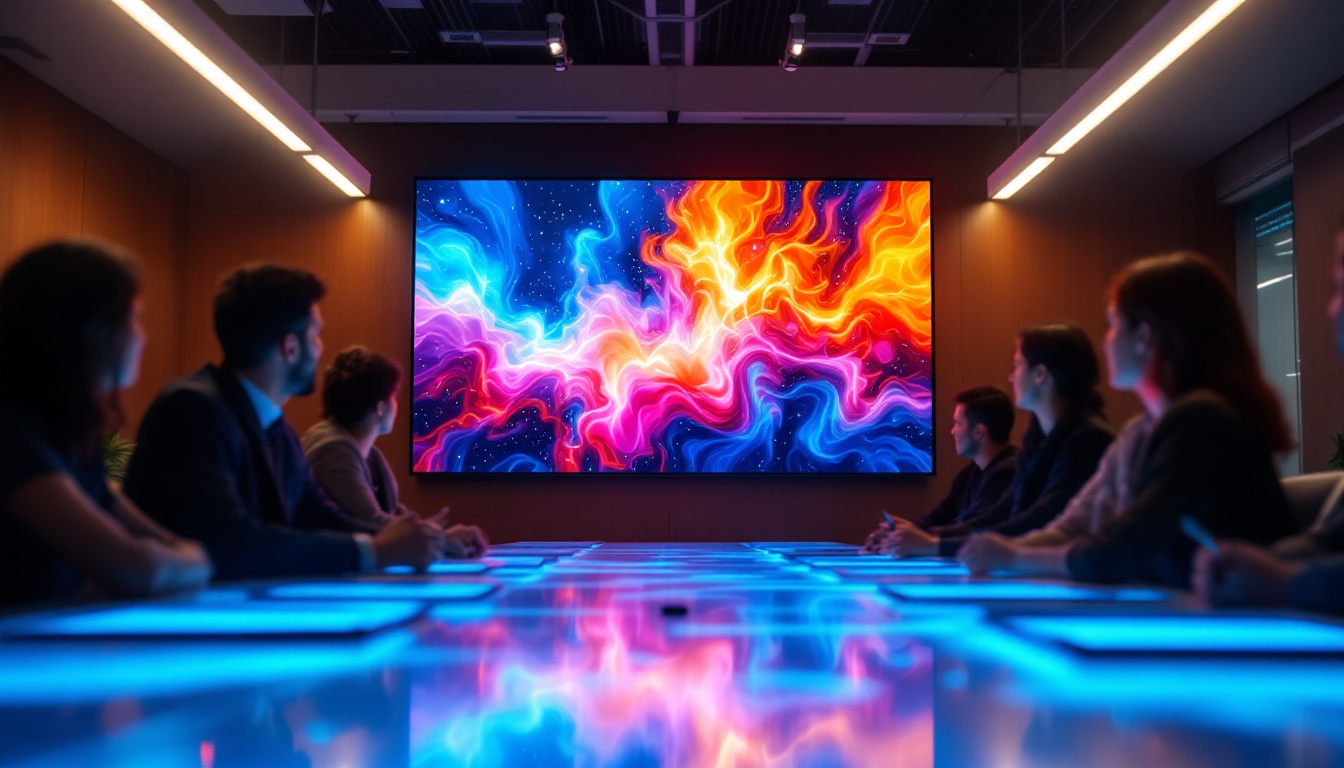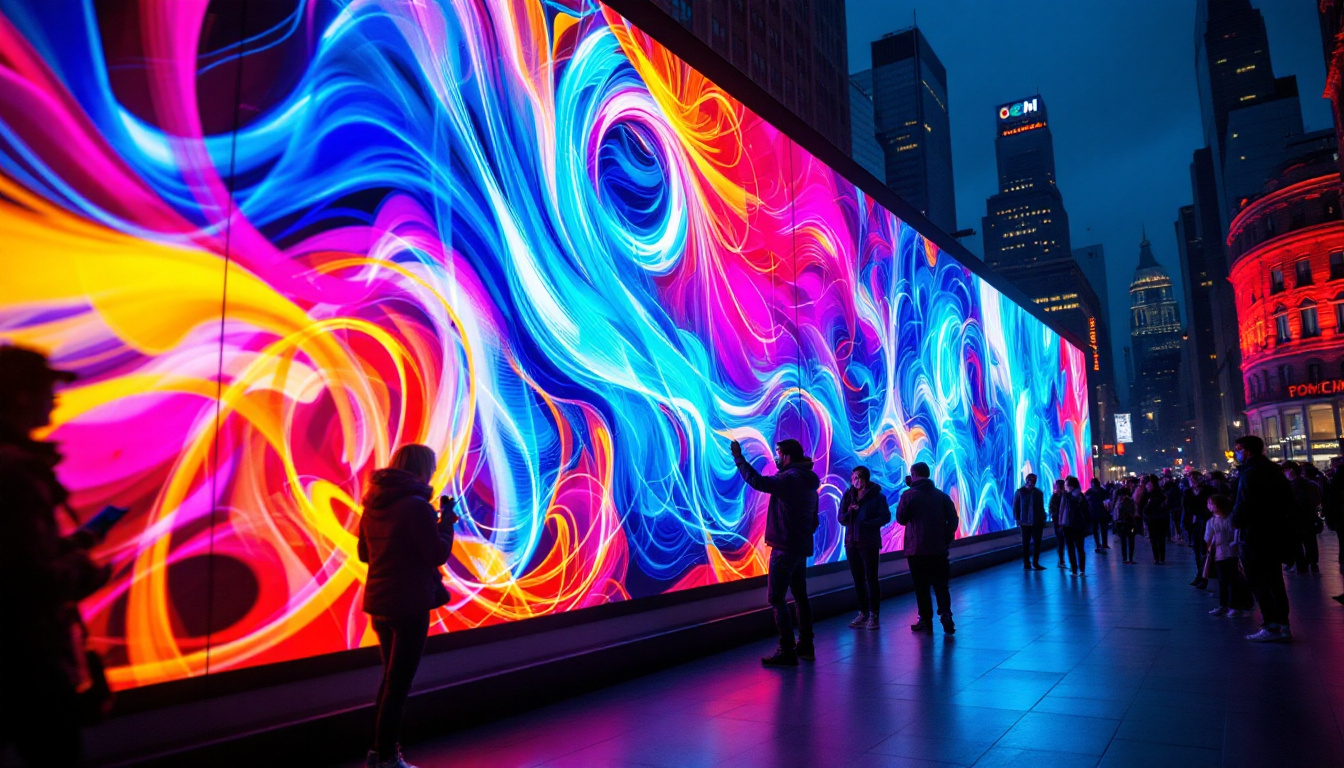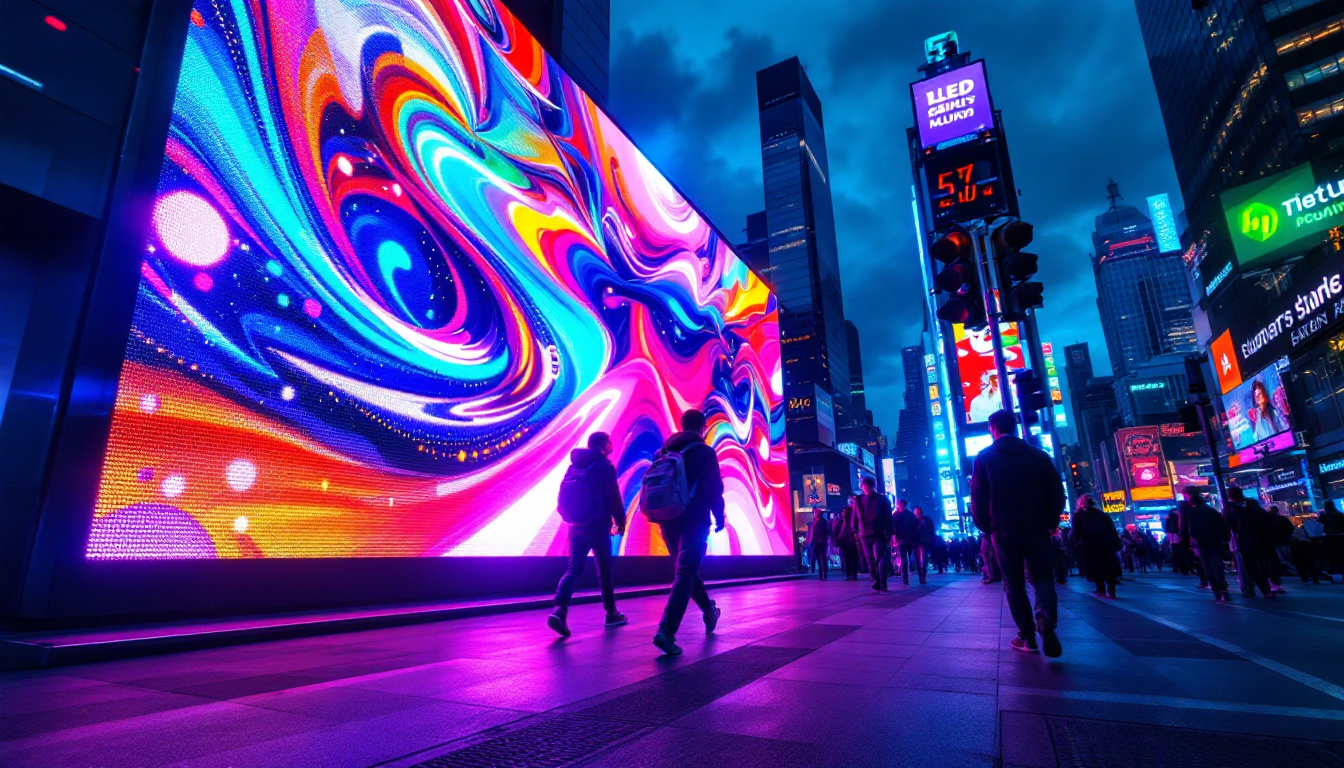Big Outdoor Screen TV: LED Display Explained
In recent years, outdoor entertainment has gained immense popularity, with more people looking to enhance their outdoor spaces. One of the standout features that can transform a backyard or patio is a big outdoor screen TV. These large LED displays not only provide a cinematic experience but also bring people together for events, sports games, and movie nights under the stars. This article delves into the intricacies of LED displays used in outdoor TVs, exploring their technology, benefits, and considerations for installation.
Understanding LED Technology
LED, or Light Emitting Diode, technology has revolutionized the way we view images and videos. This technology is not just confined to indoor televisions; it has found its way into outdoor displays, offering vibrant colors and exceptional clarity even in bright sunlight. The transition from traditional lighting methods to LED has not only enhanced visual experiences but has also contributed significantly to energy efficiency, making it a preferred choice for both consumers and businesses alike.
How LED Displays Work
LED displays consist of numerous tiny diodes that emit light when an electric current passes through them. These diodes are arranged in a grid format, where each pixel is made up of red, green, and blue (RGB) components. By adjusting the intensity of these colors, a wide spectrum of colors can be produced, resulting in stunning visuals. The technology behind LED displays allows for rapid refresh rates, which is particularly beneficial for displaying fast-moving images, such as in sports broadcasts or action-packed video games.
The brightness of an LED display is one of its most significant advantages. Outdoor environments often present challenges such as sunlight glare, which can make it difficult to see images on a screen. However, LED technology is designed to combat this issue, providing high brightness levels that ensure visibility even in direct sunlight. Additionally, the longevity of LED lights—often lasting tens of thousands of hours—means that they require less frequent replacement, further enhancing their cost-effectiveness over time.
Types of LED Displays
When it comes to outdoor screens, there are primarily two types of LED displays: direct view and backlit. Direct view LED displays are made up of individual LED modules that form the screen, while backlit displays utilize LED lights behind an LCD panel to enhance brightness and color. Each type has its own advantages and is suited for different outdoor environments. The choice between these types often depends on specific use cases, such as advertising, event broadcasting, or public information displays.
Direct view LED displays are often preferred for larger installations due to their superior brightness and color accuracy. They are also more durable, making them ideal for outdoor settings where weather conditions can vary. On the other hand, backlit displays may be more cost-effective for smaller setups but can struggle in bright outdoor conditions. Moreover, advancements in LED technology have led to the development of flexible and transparent LED screens, which open up new possibilities for creative advertising and architectural applications, allowing designers to integrate displays seamlessly into their environments.
Benefits of Outdoor LED Screens
Investing in a big outdoor screen TV offers numerous benefits that enhance the outdoor experience. From entertainment to advertising, these screens serve multiple purposes.
Enhanced Viewing Experience
One of the primary reasons for choosing an outdoor LED screen is the enhanced viewing experience it provides. The high-definition quality of LED displays ensures that every detail is visible, whether it’s a thrilling sports event or a captivating movie. The large screen size allows for a more immersive experience, making viewers feel as if they are part of the action.
Moreover, many outdoor LED screens come equipped with advanced audio systems, further amplifying the experience. High-quality sound complements the visuals, creating a complete sensory experience that indoor setups often struggle to achieve. This combination is particularly beneficial for large gatherings, where the sound can reach every corner of the space, ensuring that no one misses a moment of the action.
In addition to the visual and audio enhancements, outdoor LED screens often feature adjustable brightness settings. This allows the display to remain clear and vibrant even in direct sunlight, ensuring that viewers can enjoy their favorite content at any time of day. The ability to tailor the brightness also means that the screens can be used effectively during evening events, creating a cozy atmosphere that encourages social interaction.
Durability and Weather Resistance
Outdoor LED screens are built to withstand various weather conditions. They are typically designed with robust materials that resist water, dust, and extreme temperatures. This durability ensures that the screen remains functional and visually appealing, regardless of the elements it faces.
Additionally, many outdoor screens come with protective coatings that guard against UV rays, preventing colors from fading over time. This resilience makes them a long-term investment for outdoor entertainment. The advanced engineering behind these screens also includes features like anti-glare technology, which minimizes reflections from sunlight, ensuring that viewers can enjoy a clear picture without distractions.
Furthermore, the installation of outdoor LED screens is often designed to be user-friendly, allowing for easy setup and dismantling. This portability means that they can be relocated for different events, whether it’s a backyard barbecue or a community festival, making them a flexible solution for outdoor entertainment needs.
Versatility of Use
Outdoor LED screens are not just limited to movie nights or sports events; they offer versatility that can cater to various needs. These screens can be used for outdoor parties, corporate events, live concerts, and even advertising. The ability to display different types of content makes them a valuable asset for both personal and commercial use.
Furthermore, with the rise of smart technology, many outdoor LED screens can connect to the internet, allowing users to stream content directly from popular platforms. This feature enhances their usability, making them suitable for any occasion. Event planners can easily showcase presentations, live feeds, or even social media updates, engaging audiences in real-time and creating a dynamic atmosphere.
Moreover, outdoor LED screens can also serve as interactive displays, allowing users to engage with the content in innovative ways. For instance, touch-screen capabilities can be integrated for games or informational kiosks, providing an interactive experience that captivates guests. This level of engagement not only entertains but also fosters a sense of community among viewers, making every event memorable.
Installation Considerations
While the allure of a big outdoor screen TV is undeniable, there are several factors to consider before installation. Proper planning ensures that the screen is set up for optimal performance and longevity.
Location and Placement
The location of the outdoor screen plays a crucial role in its effectiveness. It should be positioned in a way that minimizes glare from the sun while maximizing viewing angles. Ideally, the screen should be placed in a shaded area or have a protective cover to shield it from direct sunlight.
Additionally, the height and distance from seating areas should be carefully considered. The screen should be at eye level for comfortable viewing, and there should be enough distance between the screen and seating to avoid eye strain.
Power Supply and Connectivity
Ensuring a reliable power supply is essential for the operation of outdoor LED screens. It’s important to have access to a dedicated power source that can handle the screen’s energy requirements. Moreover, outdoor screens often require additional equipment, such as media players and sound systems, which also need power connections.
Connectivity options should also be evaluated. Many outdoor screens support various input methods, including HDMI, USB, and wireless connections. Ensuring compatibility with existing devices will enhance the overall user experience.
Professional Installation vs. DIY
While some may consider a DIY approach to installing an outdoor LED screen, it is often advisable to seek professional assistance. Professionals have the expertise to handle the technical aspects of the installation, ensuring that the screen is securely mounted and properly calibrated for optimal performance.
Moreover, professional installation can help navigate any local regulations or permits that may be required for outdoor installations. This can save time and prevent potential legal issues down the line.
Maintenance and Care
To ensure the longevity of a big outdoor screen TV, regular maintenance and care are necessary. Proper upkeep not only enhances performance but also extends the lifespan of the display.
Cleaning the Screen
Outdoor screens are exposed to various elements, including dust, dirt, and moisture. Regular cleaning is essential to maintain picture quality. It is advisable to use a soft, lint-free cloth and a cleaning solution specifically designed for electronic screens. Avoid using abrasive materials that could scratch the surface.
Cleaning should be done periodically, especially after heavy use or adverse weather conditions. Keeping the screen clean will ensure that colors remain vibrant and the viewing experience is not compromised.
Regular Software Updates
For outdoor LED screens that come equipped with smart technology, regular software updates are crucial. These updates often include performance enhancements, security patches, and new features that can improve the overall user experience.
Checking for updates periodically and installing them promptly will ensure that the screen operates smoothly and securely. This practice also helps in troubleshooting any issues that may arise over time.
Seasonal Preparations
As seasons change, so do the challenges posed to outdoor screens. In colder months, it may be necessary to cover the screen or store it indoors to protect it from snow and ice. Conversely, during the summer, ensuring adequate ventilation and shade can prevent overheating.
Taking seasonal precautions can significantly extend the lifespan of the outdoor screen, ensuring it remains a valuable addition to outdoor entertainment for years to come.
Conclusion
A big outdoor screen TV equipped with LED display technology can transform any outdoor space into a vibrant entertainment hub. With their superior brightness, durability, and versatility, outdoor LED screens offer an unparalleled viewing experience that can cater to various events and gatherings.
However, careful consideration must be given to installation, maintenance, and seasonal care to ensure the screen remains functional and visually appealing. By understanding the technology behind LED displays and the benefits they offer, individuals can make informed decisions that enhance their outdoor entertainment experience.
As outdoor living continues to grow in popularity, investing in a high-quality outdoor LED screen is a step towards creating memorable moments with family and friends, all while enjoying the beauty of the great outdoors.
Discover the Future of Outdoor Entertainment with LumenMatrix
Ready to elevate your outdoor spaces with cutting-edge LED display technology? Look no further than LumenMatrix, a leader in innovative LED solutions that bring your entertainment and advertising to life. From immersive Outdoor LED Wall Displays to dynamic LED Sports Displays and beyond, LumenMatrix offers a wide range of products designed to create unforgettable visual experiences. Embrace the revolution in visual communication and check out LumenMatrix LED Display Solutions today to transform your outdoor gatherings into spectacular events.

